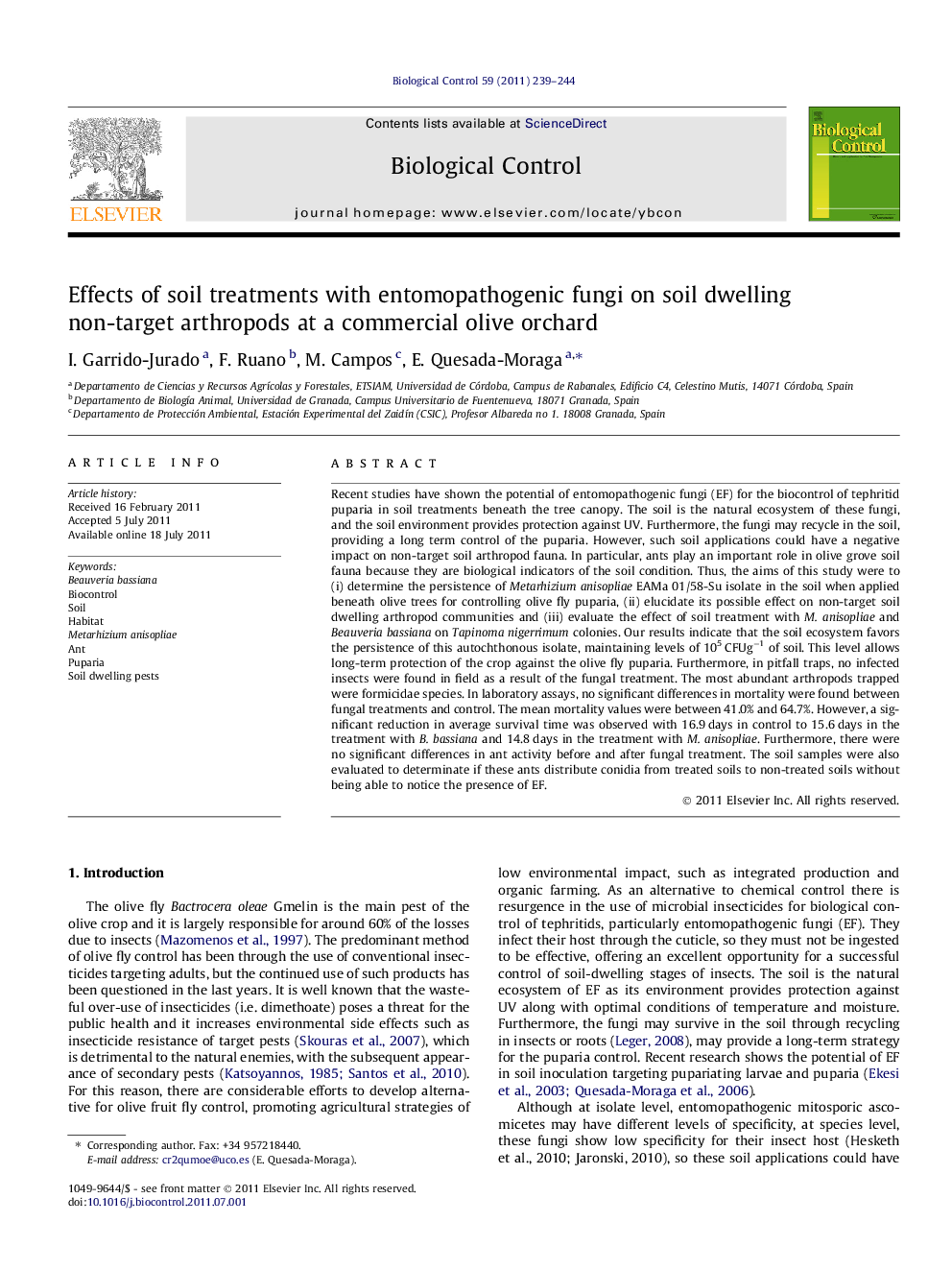| Article ID | Journal | Published Year | Pages | File Type |
|---|---|---|---|---|
| 6373020 | Biological Control | 2011 | 6 Pages |
Recent studies have shown the potential of entomopathogenic fungi (EF) for the biocontrol of tephritid puparia in soil treatments beneath the tree canopy. The soil is the natural ecosystem of these fungi, and the soil environment provides protection against UV. Furthermore, the fungi may recycle in the soil, providing a long term control of the puparia. However, such soil applications could have a negative impact on non-target soil arthropod fauna. In particular, ants play an important role in olive grove soil fauna because they are biological indicators of the soil condition. Thus, the aims of this study were to (i) determine the persistence of Metarhizium anisopliae EAMa 01/58-Su isolate in the soil when applied beneath olive trees for controlling olive fly puparia, (ii) elucidate its possible effect on non-target soil dwelling arthropod communities and (iii) evaluate the effect of soil treatment with M. anisopliae and Beauveria bassiana on Tapinoma nigerrimum colonies. Our results indicate that the soil ecosystem favors the persistence of this autochthonous isolate, maintaining levels of 105Â CFUgâ1 of soil. This level allows long-term protection of the crop against the olive fly puparia. Furthermore, in pitfall traps, no infected insects were found in field as a result of the fungal treatment. The most abundant arthropods trapped were formicidae species. In laboratory assays, no significant differences in mortality were found between fungal treatments and control. The mean mortality values were between 41.0% and 64.7%. However, a significant reduction in average survival time was observed with 16.9Â days in control to 15.6Â days in the treatment with B. bassiana and 14.8Â days in the treatment with M. anisopliae. Furthermore, there were no significant differences in ant activity before and after fungal treatment. The soil samples were also evaluated to determinate if these ants distribute conidia from treated soils to non-treated soils without being able to notice the presence of EF.
Graphical abstractDownload full-size imageHighlights⺠The soil enables the persistence of EF providing season-long control. ⺠Soil treatments with EF didn't affect on soil dwelling non-target arthropods. ⺠Soil fungal treatments didn't affect on Tapinoma nigerrimum in laboratory conditions. ⺠Tapinoma nigerrimum didn't disseminate the inoculum, in contrast other species of ants.
